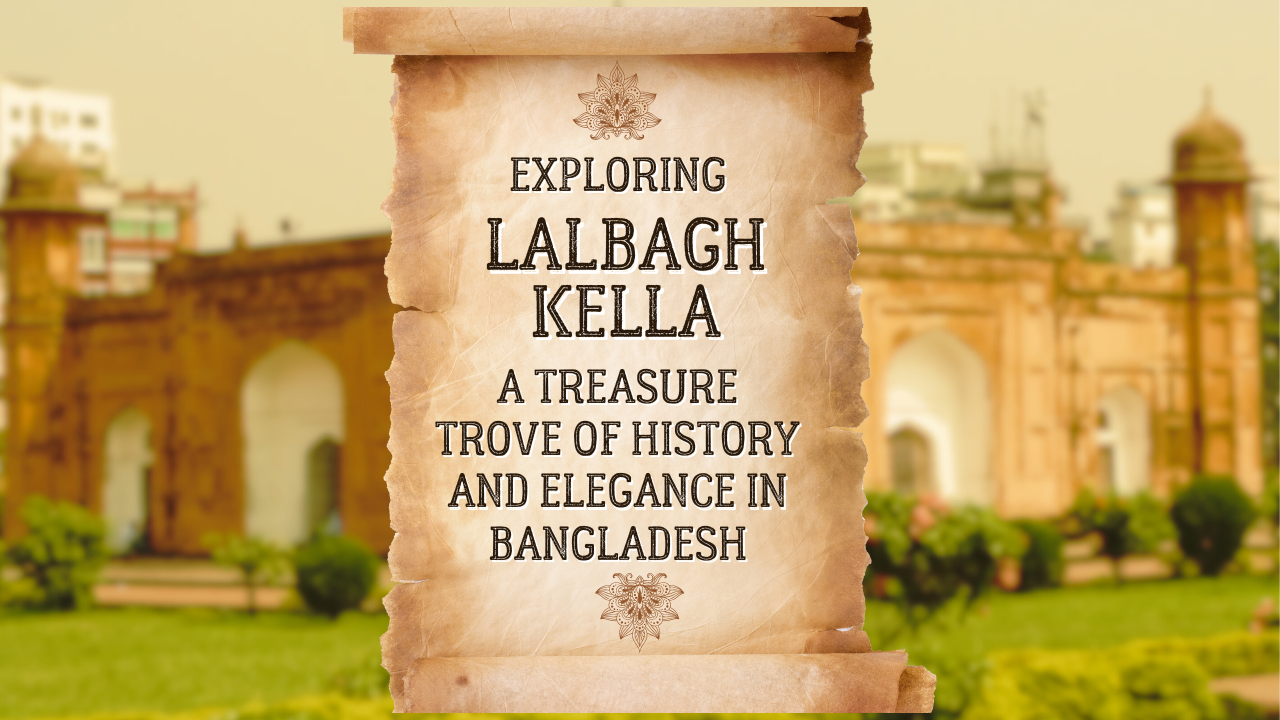
Have you ever felt the quiet thrill of walking through a piece of history, where every brick and stone whispers tales of the past? You’ll get that feeling when you step into Lalbagh Kella, one of Dhaka’s most iconic historical sites. Whether you’re a history buff, an architecture enthusiast, or somebody who loves exploring new places, Lalbagh Kella is bound to fascinate you.
Located in the old part of Dhaka, Lalbagh Fort, as it’s popularly known, is more than just a tourist attraction. It’s a slice of history that offers a glimpse into the prosperous Mughal era of Bengal. This reddish-brown sandstone fort holds both beauty and mystery, making it one of those places that deserves to be on your must-visit list.
The Story Behind Lalbagh Kella


Did you know that Lalbagh Kella was never completed? Initially commissioned by Prince Muhammad Azam, the third son of Emperor Aurangzeb, in 1678, the fort was meant to be a grand palace complex. However, fate intervened. Construction was halted after the death of Shaista Khan’s daughter, Pari Bibi, who is a central figure in the fort’s story.

Pari Bibi’s death in 1684 cast a shadow of grief over the project, leading to its abandonment. Some even say the fort carries her spirit, adding a mystique to its charm. Today, Lalbagh Kella stands as a silent testament to what could have been a monumental Mughal marvel.
A Stroll Through the Fort Grounds



When you walk inside the cella, you might feel like traveling back in time. The grandeur of the main gateway strikes you first. It’s a bold reminder of Mughal architecture—symmetry, detailed carvings, and a sense of invincibility. But the magic doesn’t stop there. The fort’s layout is thoughtfully designed, with trails leading to its key attractions, each telling its own story.
Pari Bibi’s Tomb


One of the fort’s most captivating parts is the tomb of Pari Bibi. This splendid mausoleum, adorned with marble and black basalt, is elegant. It’s not just a burial site; it’s a testament to the Mughal tradition of grandeur in commemorating loved ones. The serenity of this spot, paired with its architectural beauty, gives you a sense of reverence.
The Audience Hall or Diwan-i-Aam
Picture this—a grand hall where rulers met their courtiers and made important decisions. The Diwan-i-Aam is another highlight of the fort, where you can almost hear the echo of the past. Though much of it stands in ruins today, you can still sense the weight of history that this space holds.
The Mosque
Nestled within the fort is a three-dome mosque, a stunning example of Mughal-era craftsmanship. Simple yet striking, it reminds us of the significance of religion in daily life during the Mughal period. The mosque retains its original Shah Jahan-style features, and its calm surroundings make it an excellent spot for quiet reflection.
The Charm of Mughal Architecture



Lalbagh Kella stands out because of its ideal blend of aesthetic fashion and functionality, a hallmark of Mughal architecture. Key features like the elaborate tilework, beautiful gardens, and water channels resemble the artistic creativity of the time. Though parts of the fort have weathered significantly, the remaining structures still exude a sense of timelessness.
And speaking of those gardens—imagine walking along pathways lined with greenery, with a breeze carrying the scent of flowers. The gardens were designed to create an aambianceof peace and harmony.
Untold Stories and Legends

Every historical site has its stories, and Lalbagh Kella is no different. People often speak of hidden tunnels believed to connect the fort to Sonargaon and other parts of Dhaka, though they’ve never been found. There’s also a tale about Pari Bibi’s ghost, who is said to appear on quiet nights. Whether true or not, these stories make the fort even more mysterious.
Visiting Today

Lalbagh Kella is not just a place to explore history—it’s also perfect for a relaxing day out. Open all week, it attracts locals and tourists, especially on weekends. The entry fee is reasonable, and the experience is worth it. You can wander around the gardens, explore the ruins, and soak in the peaceful atmosphere, which makes you feel connected to the past. Photography lovers will find countless picture-perfect spots here. If you plan a visit, wear comfy shoes since there’s plenty to see and walk around. Visiting near sunset is a treat—watching the golden light on the red sandstone walls is genuinely magical.
Why Lalbagh Kella Should Be on Your List



Exploring Lalbagh Kella isn’t just about seeing old structures—it’s about immersing yourself in a chapter of history, imagining the lives, glory, and even tragedies of those who once walked its halls. It’s about standing in a place that has witnessed love, ambition, and loss all rolled into one.
And the best part? Lalbagh Kella is a place for everyone. Whether you’re looking for inspiration, learning, or a peaceful spot to spend a day, this treasure trove of history and elegance has something to offer.
Don’t just take my word for it—experience it for yourself! Once you step into Lalbagh Kella, I guarantee you’ll leave with a piece of its magic in your heart.



